#slavic goddess
Explore tagged Tumblr posts
Text
how much parents issues do you need to ask literal ancient gods if theyre proud of you asking for a friend
#pagan#paganism#witchcraft#deity work#greek gods#aphrodite#aphrodite devotee#bastet#bastet devotee#apollo#apollo devotee#dionysus#dionysus devotee#marzanna#morana#morana devotee#slavic goddess#hellenic deities#hellenic polytheism#kemetic#kemetism
469 notes
·
View notes
Text

Hiii guys. Today I can show you Dodola - the goddess of rain and light thunderstorms, warm showers and fertility. She is one of the most beautiful and kind goddesses of Iriy (the place where the light gods live). It is very difficult to anger her, but if this happens, then be careful. She is Perun's wife, the mother of Devana and Yarilo (I haven’t drawn him yet).
I didn't think about giving her any important role in the story, but after I drew her I started thinking… Because she turned out so cute and cool wah haha
#folk tales#slavic mythology#slavic#artist on tumblr#character design#digital art#comics#tales of lukomorye#character concept#slavic folklore#dodola#goddess#slavic goddess
35 notes
·
View notes
Text
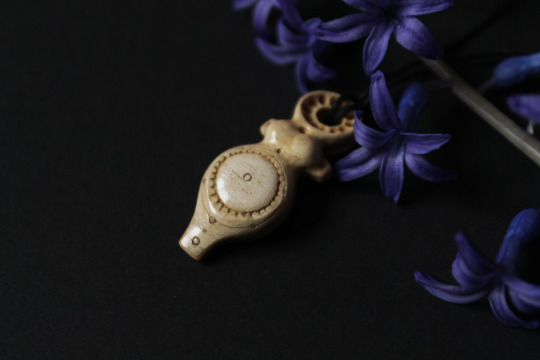





Handcarved pendant Berehynya
Made of mummoth tusk
#handcarving#bone carving#mummoth tusk#mummoth tusk curving#slavic goddess#slavic jewelry#bone jewelry#the mountain smoke
9 notes
·
View notes
Photo
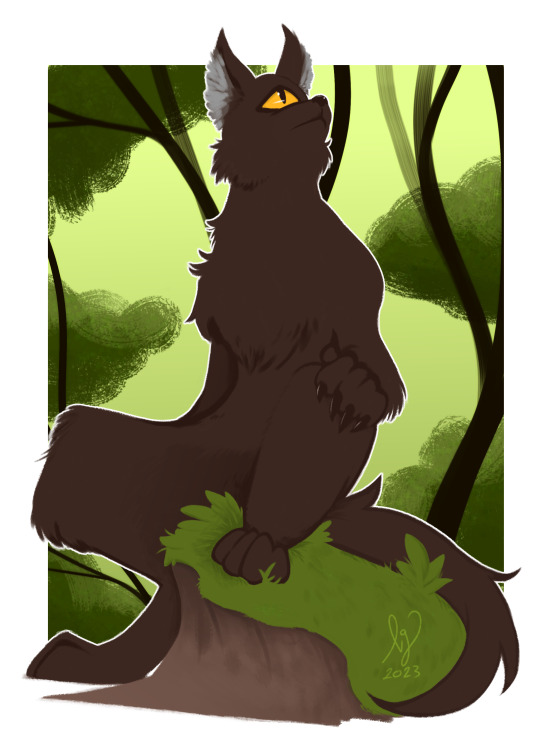
COMMISSIONS - KO-FI - CARRD - WEBSITE - REDBUBBLE SHOP - TWITTER - INSTAGRAM - YOUTUBE
.
Pasoglavac, keeping watch.
Finally finished this one, it’s a part of the same series as Vitorog and Lešij! Soft and line-less still.
I’ve had this design of Pasoglavac for a while now - using a Croatian Shepherd as a reference to make the very first drawing of him back in 2014. He remains one of my favorites.
This design is available in my Redbubble Shop
.
#soft art#digital art#illustration#digital painting#pasoglavac#slavic mythology#slavic folklore#Slavic Goddess#creature design#character design#animal character#mythology#mythological animal#neragranic#animal art#slavic myth
3 notes
·
View notes
Text

This is Morana
Slavic goddess of war and winter
Linocut 30x42 cm format
Work created especially for the exhibition 'Parles moi d'Elle' at the Aérochrome in Blagnac
#slavic goddess#slavic folklore#linocutart#linocutartist#printmaking#linoprint#engravingart#magical art
2 notes
·
View notes
Text
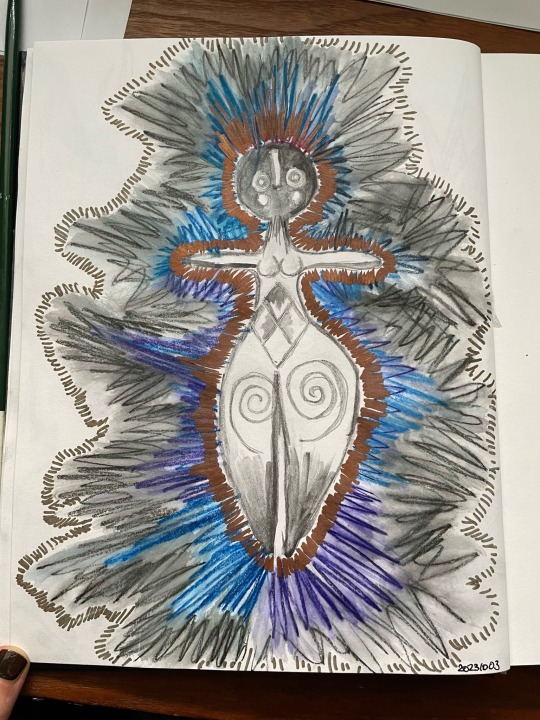
2023.10.03
Trypillian goddess
Prompts
1 note
·
View note
Text
Your offerings to the Gods never have to be over the top. Even a glass of water offered with true devotion and gratitude will get you much closer to the Gods than a diamond offered without them.
#paganism#hermetic#hermeticism#pagan#witchblr#hellenic pagan#witchcraft#hellenic polytheism#norse paganism#occult#pagan witch#witchcore#witches#hellenic devotion#norse heathen#norse runes#norse gods#norse mythology#slavic#slavic paganism#greek gods#gods#goddess#esoteric#grimoire#gnosticism#manichaeism
153 notes
·
View notes
Text

Joker Out as Slavic Deities (3/6)
Bojan Cvjetićanin as Perun | God of Thunder, lightning, the sky, war and justice
Bojan | Kris | Jan | Jure | Nace
(** Fun fact: Perun's day is Thursday, his sacred number is 4 and in his honor, a wedding ring is worn on the fourth finger of the hand.)
#joker out#joker out x slavic deities#bojan cvjetićanin#perun#I was honestly torn between giving him Perun and a god/goddess associated with love and beauty#Thankfully Rio came to the rescue with this fun fact he told me#Thus Bojan our god of thunder#Any guesses for the rest? 👀
90 notes
·
View notes
Text

Finished sun goddess tapestry
#indo european#sun goddess#embroidery#needlework#textile art#fiber art#pagan#devotional embroidery#folk embroidery#saule#Sunna#solntse#russia#karelia#goddess#goddess embroidery#sun chariot#sun shallop#sun boat#slavic
81 notes
·
View notes
Text
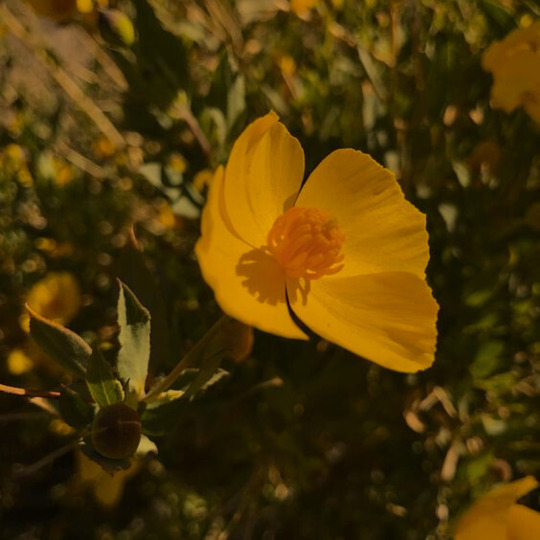





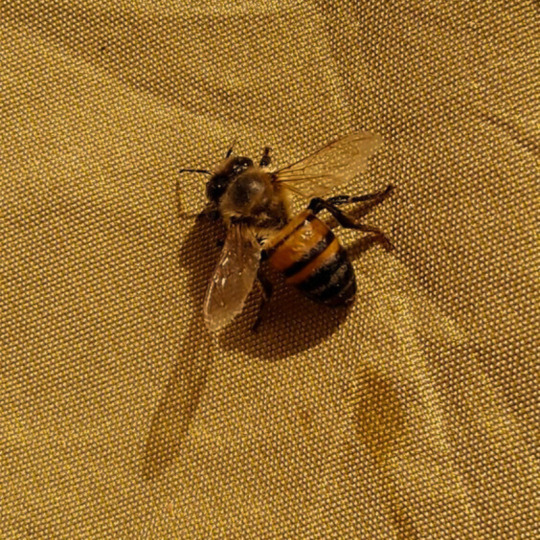

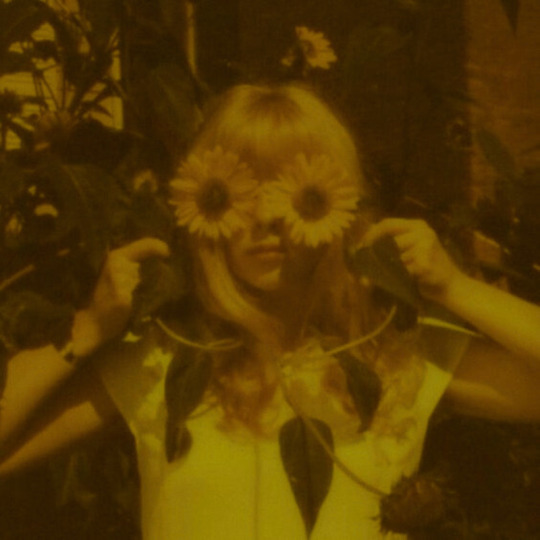
slavic mythology: yarilo
yarilo is the god of fertility and springtime, sometimes regarded as god of lust and passion. his mythical life cycle mirrored that of the wheat crop, from its birth when sown through its flourishing youth to its sacrificial death at harvest time.
373 notes
·
View notes
Text
before i started my deity work with Aphrodite i prayed to her to make me look like my best self and the day after that my hair started to curl randomly (i have no one in the family with curly hair) and i came out as genderfluid and i still was skeptical
then she gave me so many signs
i literally smelled apple chupa chups when i fell asleep (i didnt have anything apple scented in my room and the window was closed)
i was getting angel numbers constantly
i found a literal shell necklace when i went to throw the trash out
and i was still like "nah cus what if its a misunderstanding"
my soulmate was like "bitch youre so oblivious shes literally calling to you about your cars extended warranty"
and so i asked "if Aphrodite is reaching out to me please show me yourself in my dreams"
AND GUESS WHAT
i dreamed about watching a youtube video called "working with Aphrodite: deity work 101" and there was such a beautiful woman in the video she had a dark skin and long black wavy hair and very thick eyebrows and plump lips and i woke up and i was like "wow she was so pretty" and i was STILL skeptical cus i was like "nah maybe its just because i was thinking about her so much" and my soulmate was FED UP with my dumb bitch shit
and so it was time to do a deity spread because you know maybe its okay and if not then well
and i found a deity spread (i now make my own)
i pulled the card
it was nine of pentacles
i checked the deities associated with the card
"oh, thats random"
another deity spread
the strenght
"oh its the same deity"
ok i think somethings not adding up
and then i researched Bastet
"hmm cats yes, oh dancing,hmmm yeah okay"
and i looked at past me crying randomly because i got the urge to get a cat
and i looked at past me smelling incense randomly
and i looked at past me getting literal signs from her for as long as i could and i was like
"oh my god im so sorry i didnt know"
and so i started my deity work with both of them the same night
past me is stupid, oblivious and made mistakes but past me got me to now where i have a happy established relationship with my goddesses and im forever thankful for that
their altars at first were just sitting on my plant shelf
it was messy
Bastet only had my old silver cat statue, my cat tarot deck (which btw shows her character perfectly) and some tigers eye and tourmaline
Aphrodite only had some rose quartz a drawing of her that i made and a pale pink candle
now we're here and their altars are always full of food offerings to the point i had to upgrade their space to the shelf above
they still share an altar but theyre both okay with it
so uh yeah
just wanted to share this weird story of how i started
(then Aphrodite invited Apollo to my space who helped me a lot with my trauma, then i reached out to Dionysus and Marzanna and now we're here 5 ancient gods sitting in my room watching me read gay fanfiction at night)
#pagan#paganism#witchcraft#deity work#greek gods#aphrodite#aphrodite devotee#bastet#bastet devotee#hellenic goddesses#hellenic deities#hellenic pagan#hellenic polytheism#hellenism#kemetism#kemetic#egyptian goddess#apollo#apollo worship#apollo devotee#dionysus#dionysus devotee#marzanna#morana#morana devotee#slavic goddess
232 notes
·
View notes
Photo

Helloooooooo! Continuing to make character concepts. This is Devana, the goddess of hunting and forest animals (Greek Artemis). The most willful goddess in slavic mythology.
#slavic#slavic mythology#folk tales#comics#character design#slavic goddess#digital art#tales of lukomorye#slavic folklore#goddess of hunting#devana#artist on tumblr
52 notes
·
View notes
Text
💀Goddesses of death💀

Ereshkigal: Mesopotamian goddess of death, the dead, and the underworld.
Ereshkigal is the queen of the underworld, the keeper of balance, the punisher of evil & maintains order against chaos. She may have also been associated with the earth & the waters of life in Mesopotamian legend. She was associated with the city of Kutha and featured in the myth of Inanna's Descent to the Underworld. She was also connected to other deities such as Nergal, Ninazu, and Ningishzida. Ereshkigal was said to be the sister of Inanna.

Oya: African Goddess/orisha of death, storms, winds & thunder.
Oya is a powerful goddess/orisha in Nigeria who controls storms and death and is married to the thunder god, Shango. She is a shape-shifter who often appears as a mortal woman or animal while overseeing justice and bringing sudden change. She is also a guardian of women and the dead, able to call forth death or delay it. Oya is associated with rebirth and magic, and her favorite colors are maroon and copper.
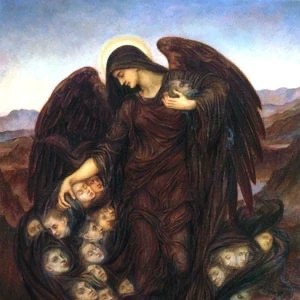
The Keres: Greek goddesses of Death, bloodshed & violence.
The Keres were female death spirits and goddesses who personified violent death. They were drawn to bloody, intense deaths on battlefields and were daughters of Nyx, Goddess of Night. They did not have the power to kill but would wait and then feast on the dead. They were described as dark beings with gnashing teeth & claws, with a thirst for human blood. They would hover over the battlefield and search for dying/ wounded men.
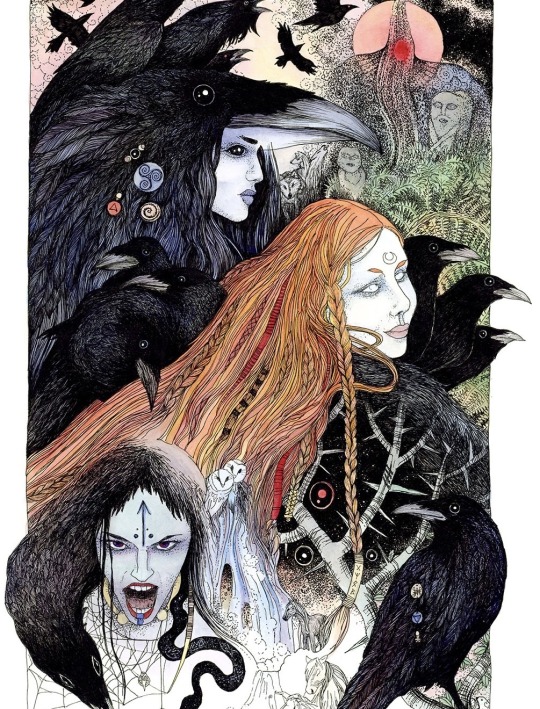
The Morrigan: Irish Goddess of death, fate, war & sovereignty.
The Morrígan, also called the Phantom Queen, is a bewitching goddess associated with war and fate, often appearing as a crow, encouraging bravery and strength in battle, & foretells doom or victory. The Morrígan is often described as a trio of sisters, representing the goddess's role as a guardian and warrior. She can appear in many forms like an old woman, a crow, a beautiful sorceress, or a fearsome creature.

Mictecacihuatl: Aztec Goddess of death & the underworld.
Also known as the Lady of the Dead, Alongside Mictlantecuhtli, her consort, she rules over Mictlán, the lowest Aztec underworld realm. She guides the departed souls on their transformative journey from life to the afterlife and embodies the profound duality of existence. The Dia de los Muertos is a vibrant festival that allows families to honor deceased loved ones with ofrendas and calavera imagery, inspired by Mictecacihuatl, who is now called Santa La muerte.

Kali-ma: Hindu Goddess of destruction, death, change & time.
Kali-ma is the wrathful & protective force of Shakti (energy), She's a caring mother to her devotees/innocent people and the destroyer of evil, she expresses the dual nature of the destruction that must come before new beginnings. Kali ma embodies the power of all, transcending good & evil to protect her people against negativity. Kali ma is Mother Nature, primordial, nurturing, and devouring, She is vested in freeing beings, granting salvation.

Hel: Norse Goddess of death, the underworld & decay.
Hel, the half living and half dead goddess, is one of Loki's children, and rules over the realm of the dead, she mostly receives those who died of illness or old age in her realm. Hel is often depicted as a fearsome figure, and in Her realm, Helheim, is considered one of the nine worlds in Norse cosmology and is located in the lowest part of the universe. In the events of Ragnarok, Hel plays a crucial role. It is foretold that she will lead an army of the dead to fight against the gods.

Morana: Slavic Goddess of death, winter, magic & dreams.
Morana is a Slavic goddess associated with seasonal agrarian rites based on the idea of death and rebirth of nature. the death of Morana at the end of winter becomes the rebirth of Spring of the Goddess Vesna, representing the coming of Spring, joy & life. She is still worshipped to this day and is often described as a vengeful, powerful goddess. She is married to the spring/love God Yarilo but their relationship is not seen as healthy.
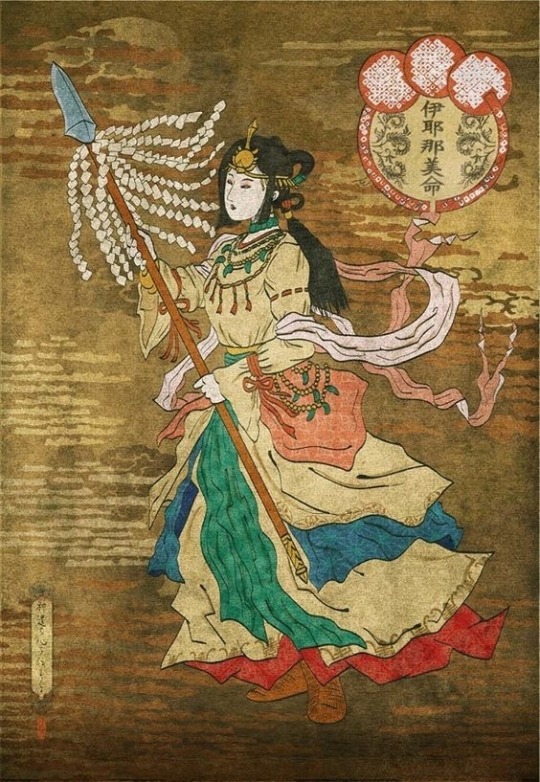
Izanami: Japanese Goddess of Death, darkness & creation.
Izanami is a Shintō creation mother goddess who became the Japanese goddess of death after she died while giving birth. Her name, Izanami, means ''the female who invites.''. She can create many lands and other divine beings, has the power of death and could command gods/spirits of the underworld. Izanami & Izanagi are the creators of the Japanese archipelago and the creators of the powerful deities Amaterasu, Tsukuyomi, and Susanoo.
#religion#religions#mesopotamian#mesopotamian mythology#african mythology#greek mythology#Hellenism#irish mythology#celtic mythology#aztec mythology#Hinduism#hindu mythology#indian mythology#norse mythology#slavic mythology#japanese mythology#Shinto#goddesses#Ereshkigal#oya#the keres#the morrigan#morrigan#Mictecacihuatl#Kali ma#hel#morana#Izanami#Shakti#lotus list
65 notes
·
View notes
Text

Mokosh by Stephanie Rew
#Мокошь#Mokosh#mokosh deity#slavic polytheism#slavic culture#slavic folklore#slavic#slavic mythology#folklore#slavs#art#artwork#folk art#modern art#painting#gold leaf panels#stephanie rew#mother earth#earth goddess#slavic folk#old gods#artists on tumblr#art style#slavic art
41 notes
·
View notes
Photo

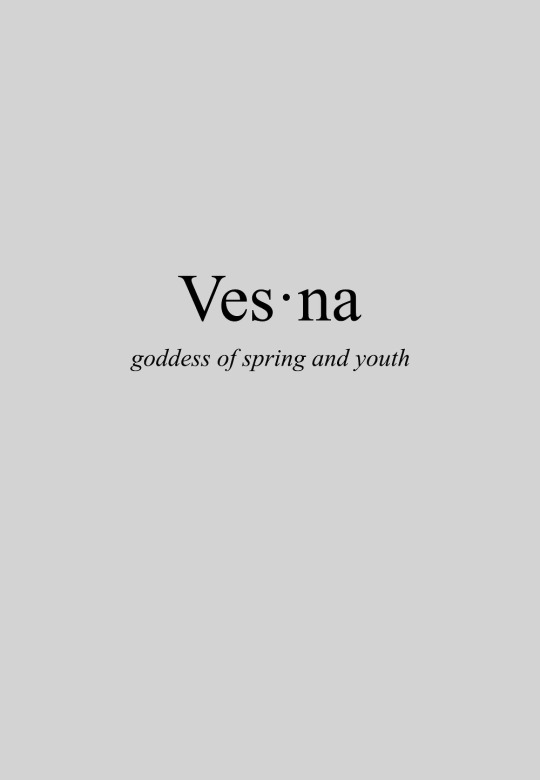

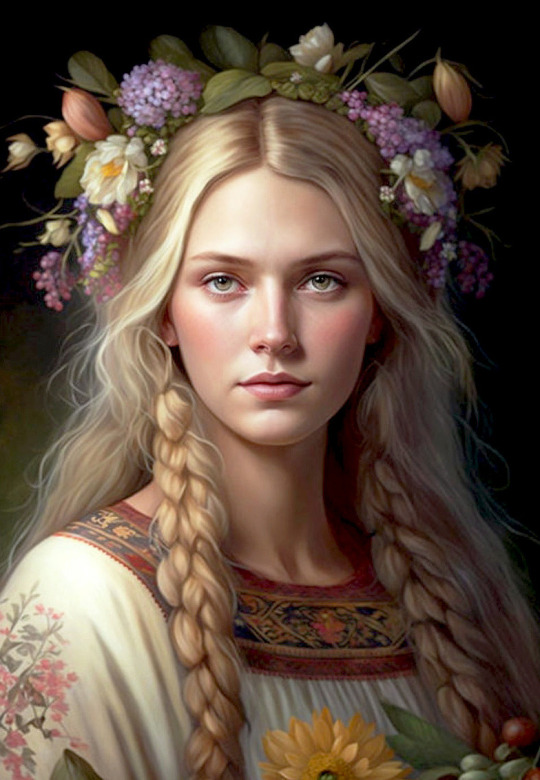
The Evermore Grimoire: Slavic Mythology
Vesna was the goddess of spring and youth in Slavic mythology. She was also a very popular goddess amongst people because she replaced Morana (goddess of winter & death). In past times, winter was characterised by a scarcity of food from various diseases caused by the cold, and then associated with death. Vesna on the other hand wore the green fields, the meadows, nice weather, favourable to life and work. With these changes in nature Vesna brought joy into the homes of the Slavs. They celebrated spring because it won winter and announced the summer season. Spring also symbolised the beginning of a beautiful season, when it bloomed, nature awoke, all was reborn and renewed life. It is precisely for this reason in particular the Serbs, had the custom of giving the name Vesna to females. People, who gave this name to a daughter, believed that they would be happy and cheerful just like the goddess Vesna, or, as spring. She was also the goddess of victory as she could overcome death and winter, and governed nature.
artwork by arsdeis
733 notes
·
View notes
Text




aesthetic honeymoon girls, melancholic goddesses.
(the best aesthetic)
#lizzy grant#aphrodite#coquette#girlblogging#femcel#honeymoon#pretty girls#lanadelrey#vlada roslyakova#goddess#ruslana korshunova#mermaid#sylvia plath#slavic doll#divine feminine#dollette#gemma ward#proannexationist#girlcore#coquette girl#model#black swan#born to die
118 notes
·
View notes